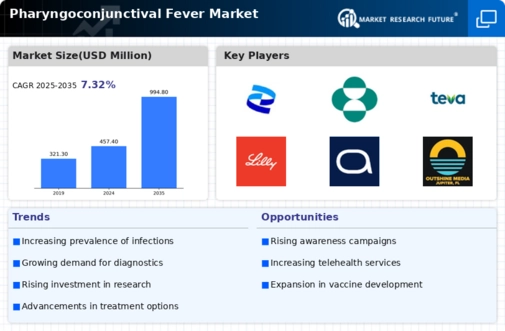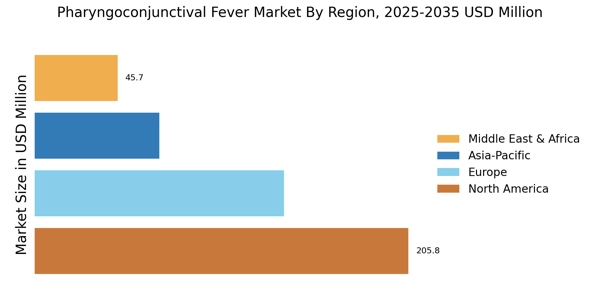Rising Public Health Initiatives
The Pharyngoconjunctival Fever Market is positively impacted by the implementation of public health initiatives focused on disease prevention and education. Governments and health organizations are increasingly prioritizing awareness campaigns that inform the public about the symptoms and transmission of pharyngoconjunctival fever. These initiatives aim to reduce the incidence of the disease through early detection and prompt treatment. Data suggests that regions with active public health campaigns experience lower rates of infection, which in turn drives demand for healthcare services and products related to pharyngoconjunctival fever. As these initiatives expand, they are likely to create a more informed population, ultimately benefiting the market.
Enhanced Healthcare Infrastructure
The Pharyngoconjunctival Fever Market benefits from advancements in healthcare infrastructure, particularly in developing regions. Improved access to healthcare facilities and resources enables timely diagnosis and treatment of pharyngoconjunctival fever. Investments in healthcare systems have led to better training for healthcare professionals, which is crucial for recognizing and managing this condition effectively. As healthcare systems evolve, the capacity to handle outbreaks and provide adequate care increases, thereby fostering market growth. Additionally, the establishment of specialized clinics and laboratories dedicated to viral infections enhances the overall response to pharyngoconjunctival fever, indicating a positive trend for the market.
Growing Demand for Diagnostic Tools
The Pharyngoconjunctival Fever Market is witnessing a surge in demand for advanced diagnostic tools. The need for rapid and accurate testing methods is paramount, especially in light of the increasing incidence of the disease. Diagnostic technologies such as PCR and serological tests are becoming more prevalent, allowing for quicker identification of the virus responsible for pharyngoconjunctival fever. This trend is supported by data indicating that timely diagnosis can significantly reduce the duration of symptoms and improve patient outcomes. As healthcare providers seek to enhance their diagnostic capabilities, the market for these tools is likely to expand, reflecting a broader commitment to effective disease management.
Increased Research and Development Activities
The Pharyngoconjunctival Fever Market is bolstered by heightened research and development activities aimed at understanding the virus and its transmission. Academic institutions and pharmaceutical companies are investing in studies that explore the epidemiology and pathophysiology of pharyngoconjunctival fever. This research is essential for developing new therapeutic options and preventive measures. Furthermore, collaborations between public health organizations and research entities are fostering innovation in vaccine development and treatment protocols. As new findings emerge, they may lead to improved strategies for managing outbreaks, thereby influencing market trends and growth trajectories.
Rising Incidence of Pharyngoconjunctival Fever
The Pharyngoconjunctival Fever Market is experiencing growth due to an increase in reported cases of the disease. Factors such as environmental changes and population density contribute to the rising incidence. According to health authorities, the prevalence of this viral infection has shown a notable uptick in certain regions, leading to heightened awareness among healthcare providers and patients alike. This surge in cases necessitates improved diagnostic and treatment options, thereby driving demand within the market. Furthermore, the correlation between seasonal outbreaks and the incidence of pharyngoconjunctival fever suggests that public health initiatives may need to adapt to these trends, potentially influencing market dynamics in the coming years.


















Leave a Comment